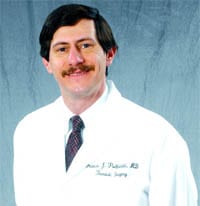Exercising the Options Alternative Therapies Can Be Effective for ADHD
The axiom that people come in all shape and sizes couldn’t be more appropriate for attention deficit hyperactivity disorder (ADHD). Some people, however, believe ADHD only comes in one shape and size.
There is a faction of experts that vehemently extol the virtues of prescribing stimulant drugs to treat ADHD. They believe so strongly in medications that the only option for ADHD treatment is to write a drug prescription. The vehemence is so deafening that the medication faction drowns out any reasonable discourse about alternative therapies for improving ADHD symptoms.
Exercise
Dr. Michael Wendt from the State University of New York at Buffalo designed and supervised a study in 2001 that demonstrated the positive benefits of exercise on ADHD children. The children were between the ages of 5 and 12 and were subjected to 40 minutes of exercise for five days per week. Children involved in the study showed a significant improvement in behavior over the six week duration of the study. Personal conduct changes were especially conspicuous during the first four weeks of the study.
Aerobic exercises seem to increase the levels of the neurotransmitters dopamine, norepinephrine, and serotonin. The three neurotransmitters augment emotional stability, concentration, acuity, and tranquility. A brain deficient in these neurotransmitters can cause depression, petulance, anxiety, rapid mood swings, and attention problems.
Exercise also releases endorphins, the opiate classified messengers of our emotional system that regulate mood, pleasure, and pain.
Coaching
An ADHD coach is a specific niche in the personal and professional coaching industry. Even though coaching is a relatively new profession, it has spawned a number of specialty coaches, including coaches who work with individuals that have ADHD. Just remember that ADHD coaching is not psychotherapy, and that coaches aren’t licensed psychotherapists.
A personal coach provides the structure, support, and feedback that motivates an individual with ADHD to realize their vision and goals in life. The primary purpose of ADHD coaching is to help an individual develop the structures necessary to function effectively and to teach practical approaches to the challenges of daily life.
The coach’s role varies depending on what specifically needs work in an ADHD child’s life. Strategies may be developed to deal with issues like time management, clutter, and priorities. Techniques may be implemented such as reminders, weekly interactions, and calendar monitoring. Like so many aspects of ADHD, a coach’s role is narrowly defined by what glaring weakness exists in the daily challenges of life.
Herbal Therapy
Herbal remedies for ADHD are typically gentle but highly effective. This means that the symptoms of ADHD are addressed without the new problems of unwanted side effects. With these therapies, you can heal, bringing your mind and body back to a place of health and balance. Herbal remedies for ADHD are much safer, and the bottom line is that they offer a greater chance of eradicating symptoms, rather than just masking them, as is the case with medications.
Diet and Nutrition
The quality of food we eat has a profound affect on ADHD. For many people, nutrition alone can effectively work as an alternative treatment form ADHD. A growing body of research points to nutritional deficiencies, especially diets low in essential fatty acids and amino acids, as a contributing factor of ADHD and learning deficiencies.
Fatty acids are used to make brain and nerve tissue. They are crucial for proper growth, mental functioning, a strong immune system, and brain development. The body cannot produce the two fatty acid families, omega-3 and omega-6, on its own, and must receive the key ADHD fatty acids through diet and supplementation.
EEG Biofeedback
EEG biofeedback is an ideal alternative therapy, since it is non-invasive with minimal side effects. The therapy involves placing one or more sensors on the scalp and one on each ear. The sensors then connect to a device that depicts a graphic recording of the electrical activity of the brain, referred to as brain waves.
From the EEG, the therapist helps the client to associate specific mental states with his or her brain waves. Feedback regarding brain activity is presented to the client via a video game in which the brightness and speed of the game’s main character corresponds to a preset threshold. The therapist guides the client by telling him or her to make the video game work with the brain.
Conclusion
Again, medication is the primary method of treatment for ADHD. The problem with most prescribed medications is that not only are they potent, but many are actually addictive, psychotropic drugs. For instance, the top drugs for ADHD, which include Ritalin, Adderall, and Concerta, are powerful stimulants that carry the potential for serious side effects. The advancement of ADHD alternative therapies adds needed fuel to an already heated ADHD medication debate.
Keith Bailey is a freelance writer on a variety of topics, including health care.

